
Tilt-shift effect created using Receding Hairline's tutorial. Click on the pic for the best view.
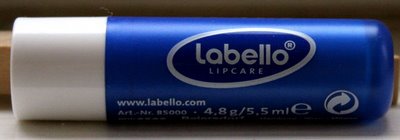
 ...according to our hot-water heater, anyway. And our overhead neighbors' washing maschine. The good news is the plumber came (we're good friends now), and we'll no longer have to listen to drops that measure 8.5 on the Richter scale at night.
...according to our hot-water heater, anyway. And our overhead neighbors' washing maschine. The good news is the plumber came (we're good friends now), and we'll no longer have to listen to drops that measure 8.5 on the Richter scale at night.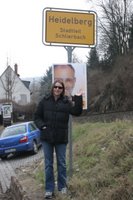
Take a picture of you standing in this town, by a welcome sign with the town's name. This town/area was first documented in 1245 with hardly more than 3000 inhabitants. This is the smallest district in Heidelberg.
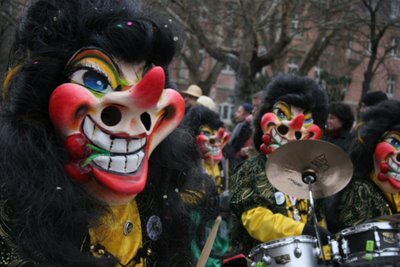
 The challenge of having guests here is keeping it interesting for yourself. Of course they have to see the Heidelberg castle, old bridge, and Hauptstrasse. I wouldn't keep anyone from doing that, but you have to give yourself something to be enthusiastic about as well, which is why I couldn't wait to take my old high school friend, Julie, and her sister, Katherine, to another spa in the area, especially since I just can't seem to get the spouse to go. You know how you can always spot a European male on the beaches in the States because he's wearing a speedo and sipping his can of coke with a straw? Well I don't know what the straw is all about, but many of the pools here require that men wear speedos, interestingly enough, for sanitary reasons. Your other option is to go to a nude place. Nudity or speedos aren't exactly selling points with Ryan, however places do exist where regular old trunks are worn. Miramar, in nearby Weinheim (20 mins.) is one of them.
The challenge of having guests here is keeping it interesting for yourself. Of course they have to see the Heidelberg castle, old bridge, and Hauptstrasse. I wouldn't keep anyone from doing that, but you have to give yourself something to be enthusiastic about as well, which is why I couldn't wait to take my old high school friend, Julie, and her sister, Katherine, to another spa in the area, especially since I just can't seem to get the spouse to go. You know how you can always spot a European male on the beaches in the States because he's wearing a speedo and sipping his can of coke with a straw? Well I don't know what the straw is all about, but many of the pools here require that men wear speedos, interestingly enough, for sanitary reasons. Your other option is to go to a nude place. Nudity or speedos aren't exactly selling points with Ryan, however places do exist where regular old trunks are worn. Miramar, in nearby Weinheim (20 mins.) is one of them.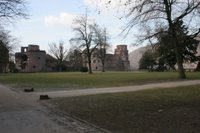 "During his reign, Friedrich V (1613-1623) demanded that this place be turned into the eighth wonder of the world. Go there and have someone take your picture in this area. Wear blue."
"During his reign, Friedrich V (1613-1623) demanded that this place be turned into the eighth wonder of the world. Go there and have someone take your picture in this area. Wear blue."
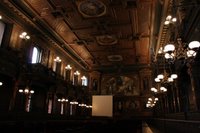 Man! This is one hard place to get into! On my third trip back to Alte Aula, I finally made it in--barely. Now remember, folks, I'll reiterate that being a part of the university, Alte Aula follows university holidays and breaks (which are a plenty), is always closed on Mondays, and now I've come to find out that it closes during a certain window of time on the days it *is* open so they can Pledge the place for 9 hours. And I can only vaguely tell you that the beginning of that cleaning time was on a Thursday afternoon around 1pm-ish. The staff ever so graciously let me visit for a generous 15 seconds in what was once the Student Auditorium (now Old Auditorium). As you can imagine, it was here that students came to listen to debates, with a not-so-visible podium in the front, and one at the back where the photo was taken in what we would consider the choir loft...next time Ryan and I have a "debate," I'll place him on one side of the room and I'll climb up a ladder on the other side of the room and see how communication works itself out.
Man! This is one hard place to get into! On my third trip back to Alte Aula, I finally made it in--barely. Now remember, folks, I'll reiterate that being a part of the university, Alte Aula follows university holidays and breaks (which are a plenty), is always closed on Mondays, and now I've come to find out that it closes during a certain window of time on the days it *is* open so they can Pledge the place for 9 hours. And I can only vaguely tell you that the beginning of that cleaning time was on a Thursday afternoon around 1pm-ish. The staff ever so graciously let me visit for a generous 15 seconds in what was once the Student Auditorium (now Old Auditorium). As you can imagine, it was here that students came to listen to debates, with a not-so-visible podium in the front, and one at the back where the photo was taken in what we would consider the choir loft...next time Ryan and I have a "debate," I'll place him on one side of the room and I'll climb up a ladder on the other side of the room and see how communication works itself out.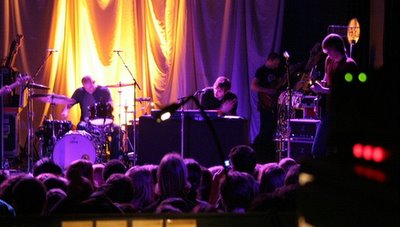

Go bowling with Ryan, whether he likes it or not. :) Take a picture of him holding a bowling ball (he'd better be smiling).
 "Visit the place the locals in Frankfurt call 'The Dom.' Find out what elections were held there and take a photo of yourself there, holding a paper that answers that question."
"Visit the place the locals in Frankfurt call 'The Dom.' Find out what elections were held there and take a photo of yourself there, holding a paper that answers that question." "Ask around Frankfurt and find the 'Slice of Cake,' the local nickname for a place called this because of its daring architectural design. Get a photo of you in front of it, and find out who designed it. While you're there, you might as well go in and tour it too."
"Ask around Frankfurt and find the 'Slice of Cake,' the local nickname for a place called this because of its daring architectural design. Get a photo of you in front of it, and find out who designed it. While you're there, you might as well go in and tour it too."Try this famous dish in Frankfurt
 potato. My guess is that Marhs was trying to be a bit naughty by making me try something that has a nasty appearance. Lucky for me, Frankfurt's grüner Soße, which is really more of a regional side specialty wasn't bad. It came with some beef and potatoes and I assumed that I was supposed to put it on my beef, but I also put it on my potatoes to be sure that I wasn't missing out on some magical combination of food. Green sauce is pretty much herbed sour cream or a tamer version of the sour and a stronger version of the herb. So really I guess it's more of Frankfurt's regional condiment specialty. Try it, I suppose, but if we're going to talk German condiments, I'd recommend the curry Soße which you'll find on their curry wurst and fries at Fests. My understanding is that Heinz (of ketchup fame) now makes a curry "ketchup" in the states, which you can find in grocery stores. Try it out on your wursts for something different.
potato. My guess is that Marhs was trying to be a bit naughty by making me try something that has a nasty appearance. Lucky for me, Frankfurt's grüner Soße, which is really more of a regional side specialty wasn't bad. It came with some beef and potatoes and I assumed that I was supposed to put it on my beef, but I also put it on my potatoes to be sure that I wasn't missing out on some magical combination of food. Green sauce is pretty much herbed sour cream or a tamer version of the sour and a stronger version of the herb. So really I guess it's more of Frankfurt's regional condiment specialty. Try it, I suppose, but if we're going to talk German condiments, I'd recommend the curry Soße which you'll find on their curry wurst and fries at Fests. My understanding is that Heinz (of ketchup fame) now makes a curry "ketchup" in the states, which you can find in grocery stores. Try it out on your wursts for something different.
Find the place where this picture was taken and take a photo of yourself somewhere else in its grounds.
The Karzer (student's dungeon)
"It served from 1712 to 1914 as a prison for students, over whom the university administration had legal sovereignty. Violations of public order could be punished by the judicial authorities of the town. Usual violations were disturbing the night-time peace by drunkenness, misbehavour, chasing the citizens' pigs and their squeaking piglets through the alleys, extinguishing street lamps. These were minor "crimes" punished with up to two weeks in prison. When the "Amtmann" (policeman) was teased, insulted, or resistance was offered against him it often went to four weeks (the "Amtmann" represented the State) in the course of the 18th century and up to 1914, when the prison was closed because of World War One. It impaired the honour of a student not to have been imprisoned at least once during his time of study in Heidelberg. There was no water in the prison flat, it had to be fetched from the well in the courtyard. There also was no kitchen. For the first two days the delinquents were "starved" on bread and water. Later on they were allowed to have meals sent from the outside, from restaurants, landladies or friends. Alcohol was not prohibited. They could visit each other in their "cells," receive visits from outside and even follow lectures. There was a door to university. There were five cells with hard iron beds and straw mattresses, two tables in each room and a few stools. Many prisoners engraved their names in wood. To kill hours they played cards and decorated walls and ceilings of their rooms and the staircase with the silhouettes of their fellow prisoners, the coats of arms of their fraternities, the date of their imprisonment and funny verses. In those days nearly all students were members of a fraternity. There was a big variety of fraternities, wearing different "colours" (uniforms, special hats, and ribbons across the chest). Many of them were hostile against each other and fighting duels. Unauthorized duels were sentenced with imprisonment. The black colour of the ceiling's paintings is candle soot. For the walls students used soot from their small iron stoves now protected with varnish. Other colours were brought in from outside. Some students left their photos embedded in the doors of their rooms. Cells were "baptized" with names like Sanssouci (after the Prussian palace in Potsdam), Grand Hotel, Palais Royal. The bathroom was named Royal Throne."